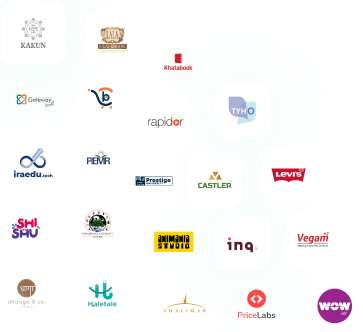Having a website with a great design is something that every business owner wants. A website without beautiful colors, well-designed visuals, and catchy typography leaves visitors feeling uninterested and unsure of the company’s offerings. However, even if you have the most aesthetically pleasing website design, it’s not enough to just create a good look. Usability is an integral component of the design process that often gets overlooked. And while beauty might be in the eye of the beholder, usability can be quantified by specific metrics that measure attention spans, conversions rates, and more. In this article, we will cover everything you need to know about usability and beauty for your homepage design process.
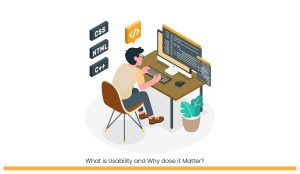 Usability is an important component of great design. You can have the best-looking website in existence, but if it’s not easy to navigate or doesn’t cater to your customers’ needs, it will be hard for users to find what they want and convert. Usability is about meeting your customer's expectations and fulfilling their needs with your site design. It's not just about aesthetics, there are a number of metrics that determine how usable a website is.
The following are just some of the metrics that measure whether a site is using usability effectively:
- Attention span while on the page
- Time spent on the site
- Bounce rate
- Conversion rates
- Scroll depth
- User satisfaction
Usability is an important component of great design. You can have the best-looking website in existence, but if it’s not easy to navigate or doesn’t cater to your customers’ needs, it will be hard for users to find what they want and convert. Usability is about meeting your customer's expectations and fulfilling their needs with your site design. It's not just about aesthetics, there are a number of metrics that determine how usable a website is.
The following are just some of the metrics that measure whether a site is using usability effectively:
- Attention span while on the page
- Time spent on the site
- Bounce rate
- Conversion rates
- Scroll depth
- User satisfaction
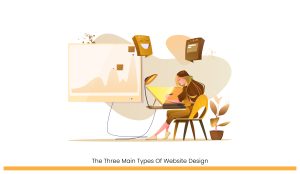 The most important thing to recognize is that there are three main types of website design:
- Brochureware - This type of design could be described as “old school” or generic. It doesn’t take into account things like visitor attention spans and conversions rates.
- Aesthetic - These websites are designed with colors, typography, and imagery that are aesthetically pleasing. They usually have a lot of graphics and animations that don’t contribute to the user experience.
- Usable - This type of design focuses on usability factors such as the visitor attention span and conversion rates. The goal is to make sure the website design is both beautiful and functional for visitors by incorporating metrics like clickthrough rates.
The most important thing to recognize is that there are three main types of website design:
- Brochureware - This type of design could be described as “old school” or generic. It doesn’t take into account things like visitor attention spans and conversions rates.
- Aesthetic - These websites are designed with colors, typography, and imagery that are aesthetically pleasing. They usually have a lot of graphics and animations that don’t contribute to the user experience.
- Usable - This type of design focuses on usability factors such as the visitor attention span and conversion rates. The goal is to make sure the website design is both beautiful and functional for visitors by incorporating metrics like clickthrough rates.
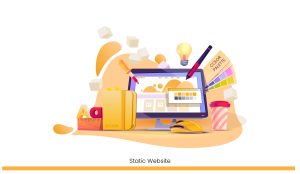
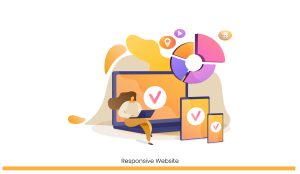 Responsive website design is the key to making your site work well on any device. When you have a responsive webpage, it will always stay constant and be readable on any screen size, whether it’s a mobile device or desktop. A responsive website design is crucial for every business in today’s digital world. In fact, over 50% of all internet browsing is done via mobile devices! This means that not having a responsive website would mean losing out on potential customers.
Responsive website design is the key to making your site work well on any device. When you have a responsive webpage, it will always stay constant and be readable on any screen size, whether it’s a mobile device or desktop. A responsive website design is crucial for every business in today’s digital world. In fact, over 50% of all internet browsing is done via mobile devices! This means that not having a responsive website would mean losing out on potential customers.
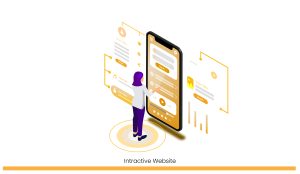 One of the components that modern websites have is interactive design. The best way to explain this is through an example. Let’s say you are a business that sells furniture, and you want to showcase your latest design on your website. Instead of just showing a picture of the new couch, you can make it interactive by allowing users to click on the picture and see what it looks like up close. This way, they will be able to better visualize why they should buy this specific couch rather than any other.
This interactive design is one of many benefits that comes with having a website with great usability and beauty. Interactive design can also be used for simple tasks such as filling out contact forms or signing up for emails.\
One of the components that modern websites have is interactive design. The best way to explain this is through an example. Let’s say you are a business that sells furniture, and you want to showcase your latest design on your website. Instead of just showing a picture of the new couch, you can make it interactive by allowing users to click on the picture and see what it looks like up close. This way, they will be able to better visualize why they should buy this specific couch rather than any other.
This interactive design is one of many benefits that comes with having a website with great usability and beauty. Interactive design can also be used for simple tasks such as filling out contact forms or signing up for emails.\
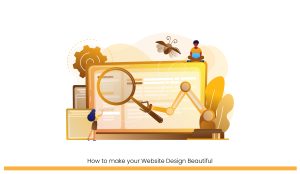 A competitive website design is not just about having an attractive layout. It’s also about having a clean and easy-to-navigate interface. You want your visitors to be able to find what they need quickly and easily without feeling lost in the website. This can be accomplished by making sure that your navigation is straightforward and that your website has a clear hierarchy of content.
A competitive website design is not just about having an attractive layout. It’s also about having a clean and easy-to-navigate interface. You want your visitors to be able to find what they need quickly and easily without feeling lost in the website. This can be accomplished by making sure that your navigation is straightforward and that your website has a clear hierarchy of content.
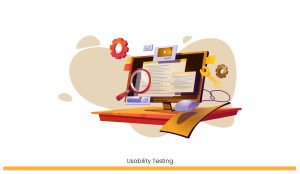 Usability testing is a great way to collect quantitative data on your site. This process entails recruiting people who match your target demographic, testing them on your website, and then gathering metrics to determine how well they can use the site.
Website Usability Tests
Website usability tests are the easiest to execute and produce the best results. You can conduct these tests by sending out a survey or by setting up a pop-up on your site. Pop-ups allow you to place a simple question that will collect data on how visitors use your site. If they are able to complete a task on the pop-up, this is proof of their usability with your site. Survey Usability Tests
Survey usability tests involve sending out an email form or getting people’s contact information with a popup and then collecting metrics from them once they fill out the survey. The downside of this type of test is that you cannot see how visitors interact with your website because you don’t have access to their screen during the test. However, surveys are easy and quick to create and send out, so it might be worth doing if you want more qualitative feedback than quantitative data.>>END>>
Usability testing is a great way to collect quantitative data on your site. This process entails recruiting people who match your target demographic, testing them on your website, and then gathering metrics to determine how well they can use the site.
Website Usability Tests
Website usability tests are the easiest to execute and produce the best results. You can conduct these tests by sending out a survey or by setting up a pop-up on your site. Pop-ups allow you to place a simple question that will collect data on how visitors use your site. If they are able to complete a task on the pop-up, this is proof of their usability with your site. Survey Usability Tests
Survey usability tests involve sending out an email form or getting people’s contact information with a popup and then collecting metrics from them once they fill out the survey. The downside of this type of test is that you cannot see how visitors interact with your website because you don’t have access to their screen during the test. However, surveys are easy and quick to create and send out, so it might be worth doing if you want more qualitative feedback than quantitative data.>>END>>
 Now you know the three main types of website design, as well as how to make your design beautiful. The next step is to think about usability.
With a good understanding of usability and beauty, your website will be on its way to success!
Now you know the three main types of website design, as well as how to make your design beautiful. The next step is to think about usability.
With a good understanding of usability and beauty, your website will be on its way to success!
What Is Usability and Why Does It Matter?
 Usability is an important component of great design. You can have the best-looking website in existence, but if it’s not easy to navigate or doesn’t cater to your customers’ needs, it will be hard for users to find what they want and convert. Usability is about meeting your customer's expectations and fulfilling their needs with your site design. It's not just about aesthetics, there are a number of metrics that determine how usable a website is.
The following are just some of the metrics that measure whether a site is using usability effectively:
- Attention span while on the page
- Time spent on the site
- Bounce rate
- Conversion rates
- Scroll depth
- User satisfaction
Usability is an important component of great design. You can have the best-looking website in existence, but if it’s not easy to navigate or doesn’t cater to your customers’ needs, it will be hard for users to find what they want and convert. Usability is about meeting your customer's expectations and fulfilling their needs with your site design. It's not just about aesthetics, there are a number of metrics that determine how usable a website is.
The following are just some of the metrics that measure whether a site is using usability effectively:
- Attention span while on the page
- Time spent on the site
- Bounce rate
- Conversion rates
- Scroll depth
- User satisfaction
The Three Main Types of Website Design
 The most important thing to recognize is that there are three main types of website design:
- Brochureware - This type of design could be described as “old school” or generic. It doesn’t take into account things like visitor attention spans and conversions rates.
- Aesthetic - These websites are designed with colors, typography, and imagery that are aesthetically pleasing. They usually have a lot of graphics and animations that don’t contribute to the user experience.
- Usable - This type of design focuses on usability factors such as the visitor attention span and conversion rates. The goal is to make sure the website design is both beautiful and functional for visitors by incorporating metrics like clickthrough rates.
The most important thing to recognize is that there are three main types of website design:
- Brochureware - This type of design could be described as “old school” or generic. It doesn’t take into account things like visitor attention spans and conversions rates.
- Aesthetic - These websites are designed with colors, typography, and imagery that are aesthetically pleasing. They usually have a lot of graphics and animations that don’t contribute to the user experience.
- Usable - This type of design focuses on usability factors such as the visitor attention span and conversion rates. The goal is to make sure the website design is both beautiful and functional for visitors by incorporating metrics like clickthrough rates.
Static Website Design

- Dynamic
Responsive Website Design
 Responsive website design is the key to making your site work well on any device. When you have a responsive webpage, it will always stay constant and be readable on any screen size, whether it’s a mobile device or desktop. A responsive website design is crucial for every business in today’s digital world. In fact, over 50% of all internet browsing is done via mobile devices! This means that not having a responsive website would mean losing out on potential customers.
Responsive website design is the key to making your site work well on any device. When you have a responsive webpage, it will always stay constant and be readable on any screen size, whether it’s a mobile device or desktop. A responsive website design is crucial for every business in today’s digital world. In fact, over 50% of all internet browsing is done via mobile devices! This means that not having a responsive website would mean losing out on potential customers.
Interactive Website Design
 One of the components that modern websites have is interactive design. The best way to explain this is through an example. Let’s say you are a business that sells furniture, and you want to showcase your latest design on your website. Instead of just showing a picture of the new couch, you can make it interactive by allowing users to click on the picture and see what it looks like up close. This way, they will be able to better visualize why they should buy this specific couch rather than any other.
This interactive design is one of many benefits that comes with having a website with great usability and beauty. Interactive design can also be used for simple tasks such as filling out contact forms or signing up for emails.\
One of the components that modern websites have is interactive design. The best way to explain this is through an example. Let’s say you are a business that sells furniture, and you want to showcase your latest design on your website. Instead of just showing a picture of the new couch, you can make it interactive by allowing users to click on the picture and see what it looks like up close. This way, they will be able to better visualize why they should buy this specific couch rather than any other.
This interactive design is one of many benefits that comes with having a website with great usability and beauty. Interactive design can also be used for simple tasks such as filling out contact forms or signing up for emails.\
How to Make Your Website Design Beautiful
 A competitive website design is not just about having an attractive layout. It’s also about having a clean and easy-to-navigate interface. You want your visitors to be able to find what they need quickly and easily without feeling lost in the website. This can be accomplished by making sure that your navigation is straightforward and that your website has a clear hierarchy of content.
A competitive website design is not just about having an attractive layout. It’s also about having a clean and easy-to-navigate interface. You want your visitors to be able to find what they need quickly and easily without feeling lost in the website. This can be accomplished by making sure that your navigation is straightforward and that your website has a clear hierarchy of content.
Usability Testing
 Usability testing is a great way to collect quantitative data on your site. This process entails recruiting people who match your target demographic, testing them on your website, and then gathering metrics to determine how well they can use the site.
Website Usability Tests
Website usability tests are the easiest to execute and produce the best results. You can conduct these tests by sending out a survey or by setting up a pop-up on your site. Pop-ups allow you to place a simple question that will collect data on how visitors use your site. If they are able to complete a task on the pop-up, this is proof of their usability with your site. Survey Usability Tests
Survey usability tests involve sending out an email form or getting people’s contact information with a popup and then collecting metrics from them once they fill out the survey. The downside of this type of test is that you cannot see how visitors interact with your website because you don’t have access to their screen during the test. However, surveys are easy and quick to create and send out, so it might be worth doing if you want more qualitative feedback than quantitative data.>>END>>
Usability testing is a great way to collect quantitative data on your site. This process entails recruiting people who match your target demographic, testing them on your website, and then gathering metrics to determine how well they can use the site.
Website Usability Tests
Website usability tests are the easiest to execute and produce the best results. You can conduct these tests by sending out a survey or by setting up a pop-up on your site. Pop-ups allow you to place a simple question that will collect data on how visitors use your site. If they are able to complete a task on the pop-up, this is proof of their usability with your site. Survey Usability Tests
Survey usability tests involve sending out an email form or getting people’s contact information with a popup and then collecting metrics from them once they fill out the survey. The downside of this type of test is that you cannot see how visitors interact with your website because you don’t have access to their screen during the test. However, surveys are easy and quick to create and send out, so it might be worth doing if you want more qualitative feedback than quantitative data.>>END>>
Conclusion
 Now you know the three main types of website design, as well as how to make your design beautiful. The next step is to think about usability.
With a good understanding of usability and beauty, your website will be on its way to success!
Now you know the three main types of website design, as well as how to make your design beautiful. The next step is to think about usability.
With a good understanding of usability and beauty, your website will be on its way to success! The world’s First zero commission platform
Hire tech partners effortlessly
 If you're a non-tech founder looking for an agency or a tech founder looking for engineers.
If you're a non-tech founder looking for an agency or a tech founder looking for engineers. You can get your 5 best matches from 2800 in 5 mins, with 1000 data points tracked.
You can get your 5 best matches from 2800 in 5 mins, with 1000 data points tracked. Connect directly with no credit card needed!
Connect directly with no credit card needed!
You’re just a click away from the best talent.

 10:50 am
10:50 am




